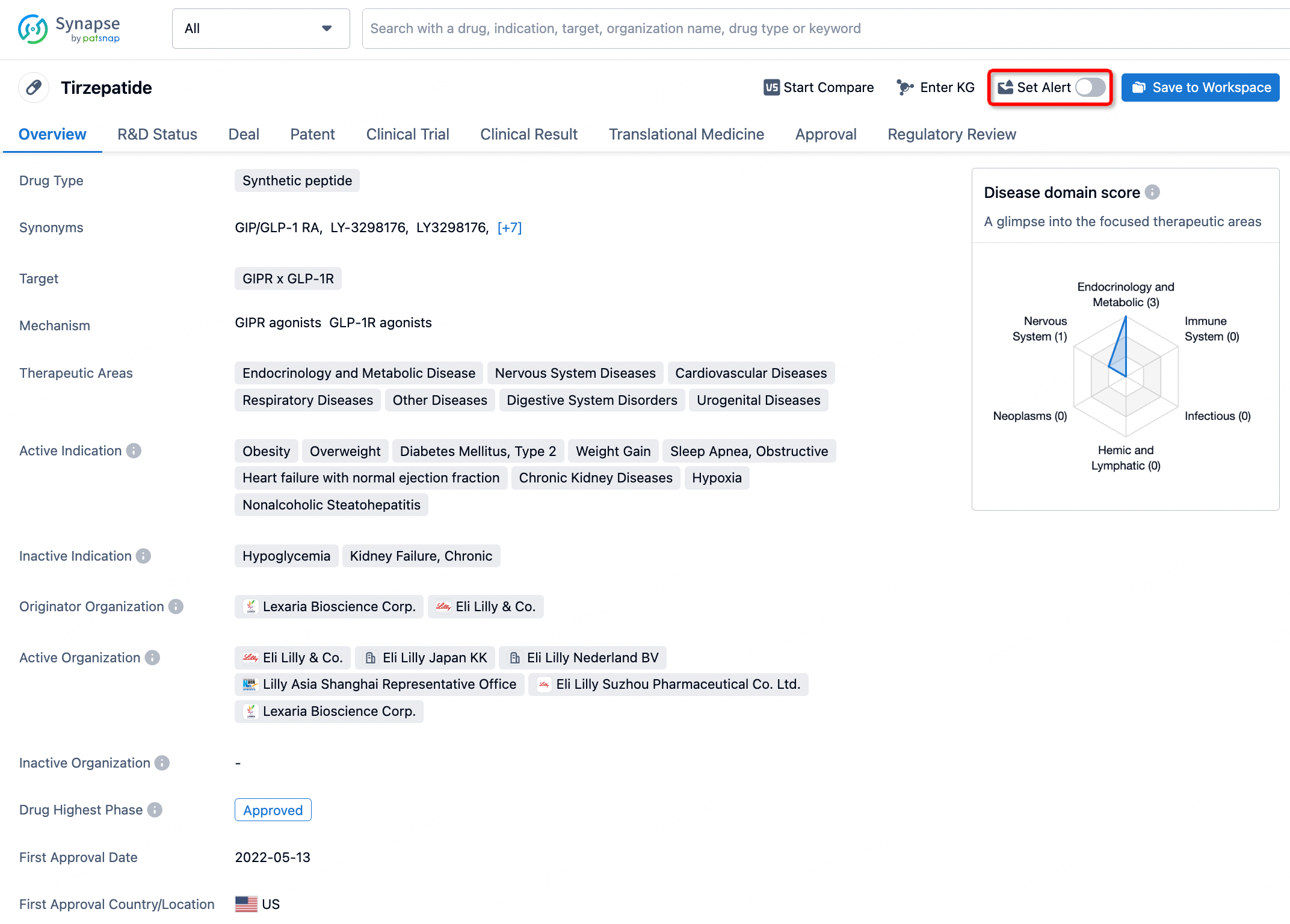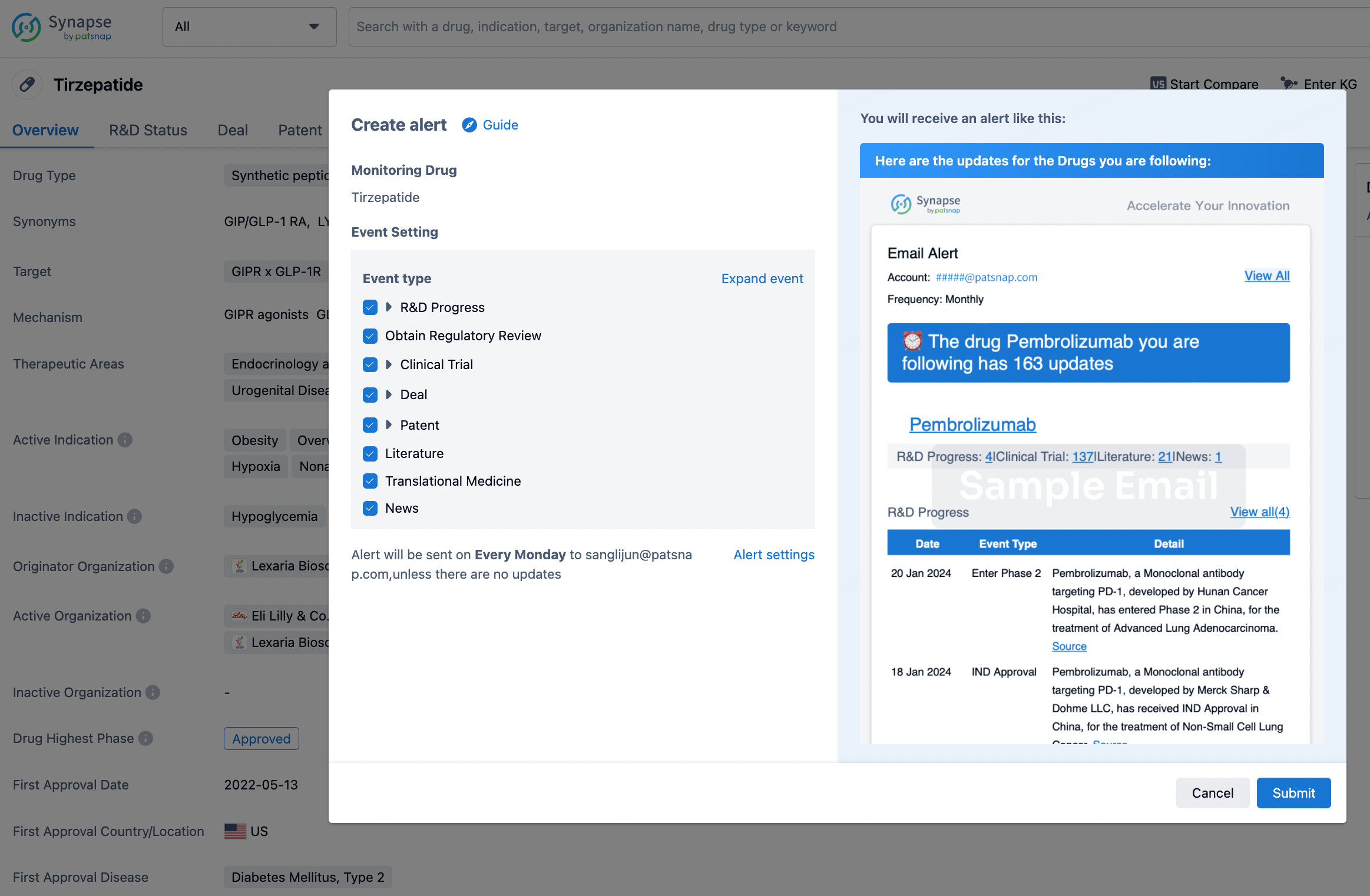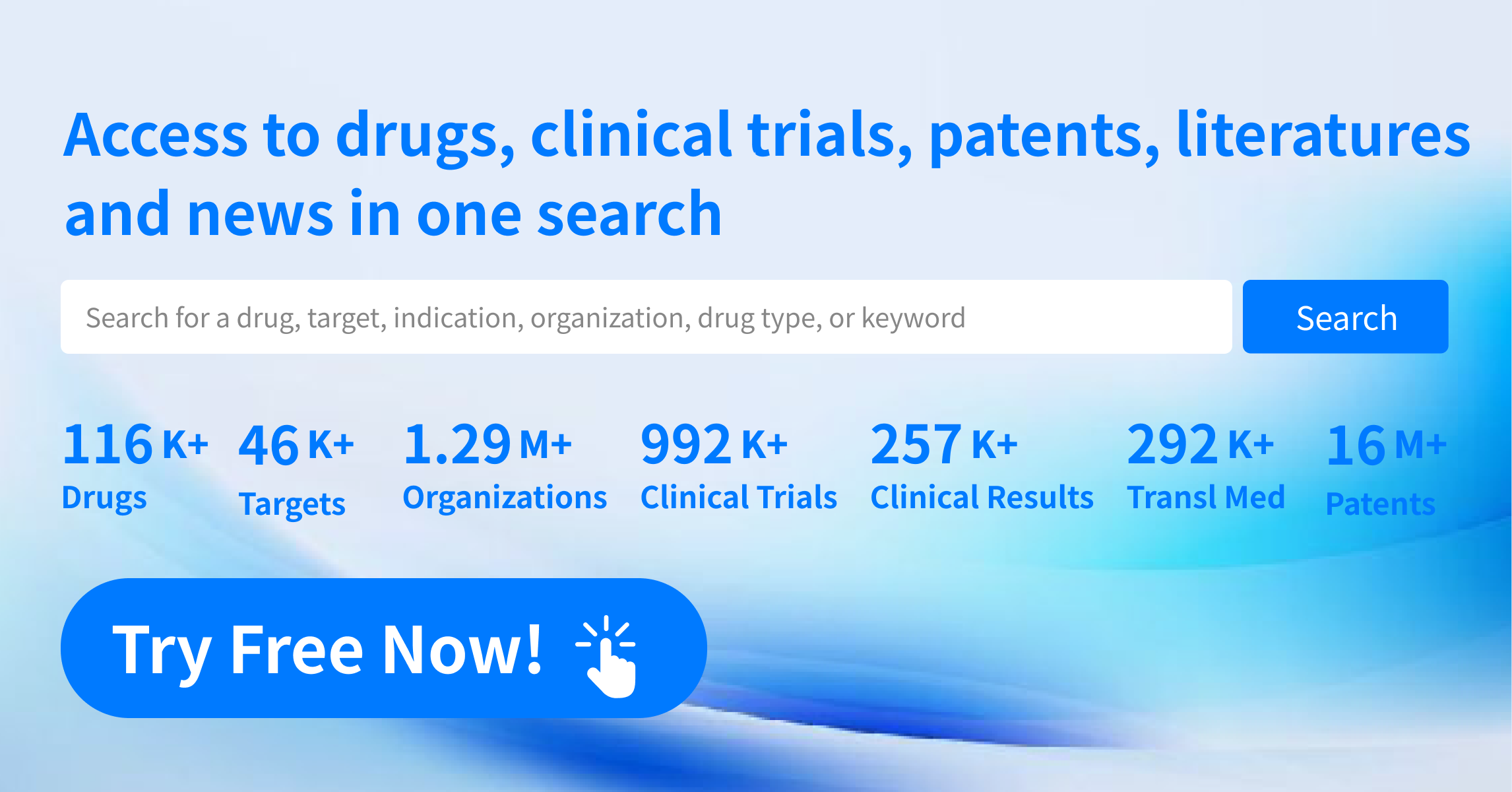Request Demo
What is Clorprenaline Hydrochloride used for?
15 June 2024
Clorprenaline Hydrochloride is a pharmaceutical compound known for its effectiveness in treating respiratory conditions. It is primarily manufactured under various trade names, such as Asmalon, Ventipra, and Bronchodine, among others. The drug targets beta-2 adrenergic receptors, which makes it a potent bronchodilator. This means it is particularly useful for managing conditions like asthma, chronic bronchitis, and other chronic obstructive pulmonary diseases (COPD). Various research institutions have studied this drug extensively, focusing on its efficacy, safety profile, and long-term effects. Clorprenaline Hydrochloride belongs to the category of beta-2 agonists, a class of drugs that are specifically designed to relax bronchial muscles and improve airflow to the lungs. Its indications are well-established in both clinical practice and medical research, showing significant benefits for patients struggling with respiratory issues. Research on Clorprenaline Hydrochloride continues, with recent studies exploring its potential in treating other conditions like premature labor due to its uterine relaxant properties.
Clorprenaline Hydrochloride Mechanism of Action
The mechanism of action of Clorprenaline Hydrochloride revolves around its ability to stimulate beta-2 adrenergic receptors in the smooth muscles of the bronchial passages. When the drug binds to these receptors, it activates adenylate cyclase, an enzyme responsible for converting ATP into cyclic AMP (cAMP). The increase in cAMP levels leads to the activation of protein kinase A (PKA), which subsequently phosphorylates various target proteins. This cascade of intracellular events results in the relaxation of bronchial smooth muscle cells, thereby dilating the airways and improving airflow.
Moreover, Clorprenaline Hydrochloride has been found to inhibit the release of mediators like histamine and leukotrienes from mast cells, further contributing to its anti-inflammatory properties. This dual action—bronchodilation and anti-inflammatory effects—makes Clorprenaline Hydrochloride a highly effective treatment for respiratory conditions characterized by bronchoconstriction and inflammation.
How to Use Clorprenaline Hydrochloride
Clorprenaline Hydrochloride is generally administered orally in the form of tablets or syrup, although inhalation forms are also available for more direct action on the bronchial passages. The onset of action usually occurs within 15 to 30 minutes of administration, with peak effects observed around one to two hours post-administration. The duration of action can last between 4 to 6 hours, making it suitable for multiple doses throughout the day as needed.
For adults, the typical dosage ranges from 20 to 40 mg, taken three to four times daily. Pediatric doses are usually adjusted according to body weight and are generally lower than adult doses. It's important to follow the prescribed dosage and administration guidelines provided by a healthcare professional to avoid potential side effects and achieve optimal therapeutic outcomes.
In certain severe cases, Clorprenaline Hydrochloride can be administered intravenously under medical supervision. This method is usually reserved for acute exacerbations of asthma or COPD, where rapid bronchodilation is crucial.
What are Clorprenaline Hydrochloride Side Effects
Like any medication, Clorprenaline Hydrochloride comes with its own set of side effects. Common side effects include tremors, headaches, palpitations, and dizziness. These are generally mild and often subside as the body adjusts to the medication. However, more severe side effects can occur, such as tachycardia (rapid heart rate), hypertension (high blood pressure), and hypokalemia (low potassium levels). These severe side effects are rare but warrant immediate medical attention if they occur.
Contraindications for the use of Clorprenaline Hydrochloride include a history of hypersensitivity to beta-2 agonists, certain cardiovascular conditions like arrhythmias, and uncontrolled hypertension. Pregnant and breastfeeding women should consult their healthcare providers before using this medication, as its safety in these populations has not been fully established.
Patients with pre-existing medical conditions such as diabetes, hyperthyroidism, and seizure disorders should also exercise caution when using Clorprenaline Hydrochloride. It is crucial to discuss your full medical history with your healthcare provider to determine if this medication is appropriate for you.
What Other Drugs Will Affect Clorprenaline Hydrochloride
Clorprenaline Hydrochloride can interact with other medications, potentially altering its effectiveness or increasing the risk of adverse effects. One major category of drugs that can affect Clorprenaline Hydrochloride includes other sympathomimetic agents, such as epinephrine or norepinephrine. Concurrent use of these drugs can lead to additive cardiovascular effects, like increased heart rate and blood pressure, which can be dangerous.
Beta-blockers, commonly used to treat hypertension and certain heart conditions, can antagonize the effects of Clorprenaline Hydrochloride. This is particularly important for patients with respiratory conditions, as beta-blockers can exacerbate bronchoconstriction and counteract the bronchodilatory effects of Clorprenaline Hydrochloride.
Other medications, such as diuretics and corticosteroids, can also interact with Clorprenaline Hydrochloride. Diuretics can potentiate the risk of hypokalemia, while corticosteroids may enhance the bronchodilatory effects but also increase the risk of systemic side effects.
Additionally, monoamine oxidase inhibitors (MAOIs) and tricyclic antidepressants can amplify the cardiovascular effects of Clorprenaline Hydrochloride, making it essential to monitor patients closely if these medications are being used concurrently.
It's also worth noting that certain over-the-counter medications, herbal supplements, and even foods can influence the effectiveness and safety profile of Clorprenaline Hydrochloride. Therefore, it is vital to provide a comprehensive list of all medications and supplements you are taking to your healthcare provider.
In summary, Clorprenaline Hydrochloride is a valuable medication for managing respiratory conditions, but it requires careful administration and monitoring to minimize side effects and interactions with other drugs. By understanding its mechanism of action, proper usage, potential side effects, and interactions, patients and healthcare providers can work together to optimize treatment outcomes.
Clorprenaline Hydrochloride Mechanism of Action
The mechanism of action of Clorprenaline Hydrochloride revolves around its ability to stimulate beta-2 adrenergic receptors in the smooth muscles of the bronchial passages. When the drug binds to these receptors, it activates adenylate cyclase, an enzyme responsible for converting ATP into cyclic AMP (cAMP). The increase in cAMP levels leads to the activation of protein kinase A (PKA), which subsequently phosphorylates various target proteins. This cascade of intracellular events results in the relaxation of bronchial smooth muscle cells, thereby dilating the airways and improving airflow.
Moreover, Clorprenaline Hydrochloride has been found to inhibit the release of mediators like histamine and leukotrienes from mast cells, further contributing to its anti-inflammatory properties. This dual action—bronchodilation and anti-inflammatory effects—makes Clorprenaline Hydrochloride a highly effective treatment for respiratory conditions characterized by bronchoconstriction and inflammation.
How to Use Clorprenaline Hydrochloride
Clorprenaline Hydrochloride is generally administered orally in the form of tablets or syrup, although inhalation forms are also available for more direct action on the bronchial passages. The onset of action usually occurs within 15 to 30 minutes of administration, with peak effects observed around one to two hours post-administration. The duration of action can last between 4 to 6 hours, making it suitable for multiple doses throughout the day as needed.
For adults, the typical dosage ranges from 20 to 40 mg, taken three to four times daily. Pediatric doses are usually adjusted according to body weight and are generally lower than adult doses. It's important to follow the prescribed dosage and administration guidelines provided by a healthcare professional to avoid potential side effects and achieve optimal therapeutic outcomes.
In certain severe cases, Clorprenaline Hydrochloride can be administered intravenously under medical supervision. This method is usually reserved for acute exacerbations of asthma or COPD, where rapid bronchodilation is crucial.
What are Clorprenaline Hydrochloride Side Effects
Like any medication, Clorprenaline Hydrochloride comes with its own set of side effects. Common side effects include tremors, headaches, palpitations, and dizziness. These are generally mild and often subside as the body adjusts to the medication. However, more severe side effects can occur, such as tachycardia (rapid heart rate), hypertension (high blood pressure), and hypokalemia (low potassium levels). These severe side effects are rare but warrant immediate medical attention if they occur.
Contraindications for the use of Clorprenaline Hydrochloride include a history of hypersensitivity to beta-2 agonists, certain cardiovascular conditions like arrhythmias, and uncontrolled hypertension. Pregnant and breastfeeding women should consult their healthcare providers before using this medication, as its safety in these populations has not been fully established.
Patients with pre-existing medical conditions such as diabetes, hyperthyroidism, and seizure disorders should also exercise caution when using Clorprenaline Hydrochloride. It is crucial to discuss your full medical history with your healthcare provider to determine if this medication is appropriate for you.
What Other Drugs Will Affect Clorprenaline Hydrochloride
Clorprenaline Hydrochloride can interact with other medications, potentially altering its effectiveness or increasing the risk of adverse effects. One major category of drugs that can affect Clorprenaline Hydrochloride includes other sympathomimetic agents, such as epinephrine or norepinephrine. Concurrent use of these drugs can lead to additive cardiovascular effects, like increased heart rate and blood pressure, which can be dangerous.
Beta-blockers, commonly used to treat hypertension and certain heart conditions, can antagonize the effects of Clorprenaline Hydrochloride. This is particularly important for patients with respiratory conditions, as beta-blockers can exacerbate bronchoconstriction and counteract the bronchodilatory effects of Clorprenaline Hydrochloride.
Other medications, such as diuretics and corticosteroids, can also interact with Clorprenaline Hydrochloride. Diuretics can potentiate the risk of hypokalemia, while corticosteroids may enhance the bronchodilatory effects but also increase the risk of systemic side effects.
Additionally, monoamine oxidase inhibitors (MAOIs) and tricyclic antidepressants can amplify the cardiovascular effects of Clorprenaline Hydrochloride, making it essential to monitor patients closely if these medications are being used concurrently.
It's also worth noting that certain over-the-counter medications, herbal supplements, and even foods can influence the effectiveness and safety profile of Clorprenaline Hydrochloride. Therefore, it is vital to provide a comprehensive list of all medications and supplements you are taking to your healthcare provider.
In summary, Clorprenaline Hydrochloride is a valuable medication for managing respiratory conditions, but it requires careful administration and monitoring to minimize side effects and interactions with other drugs. By understanding its mechanism of action, proper usage, potential side effects, and interactions, patients and healthcare providers can work together to optimize treatment outcomes.
How to obtain the latest development progress of all drugs?
In the Synapse database, you can stay updated on the latest research and development advances of all drugs. This service is accessible anytime and anywhere, with updates available daily or weekly. Use the "Set Alert" function to stay informed. Click on the image below to embark on a brand new journey of drug discovery!
AI Agents Built for Biopharma Breakthroughs
Accelerate discovery. Empower decisions. Transform outcomes.
Get started for free today!
Accelerate Strategic R&D decision making with Synapse, PatSnap’s AI-powered Connected Innovation Intelligence Platform Built for Life Sciences Professionals.
Start your data trial now!
Synapse data is also accessible to external entities via APIs or data packages. Empower better decisions with the latest in pharmaceutical intelligence.


